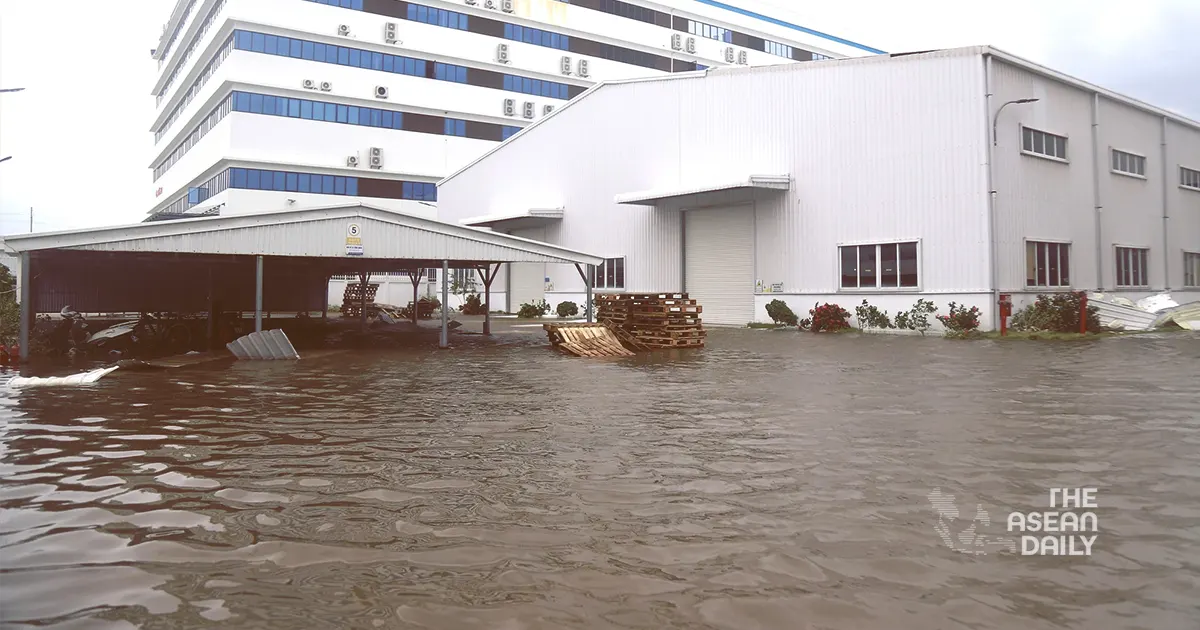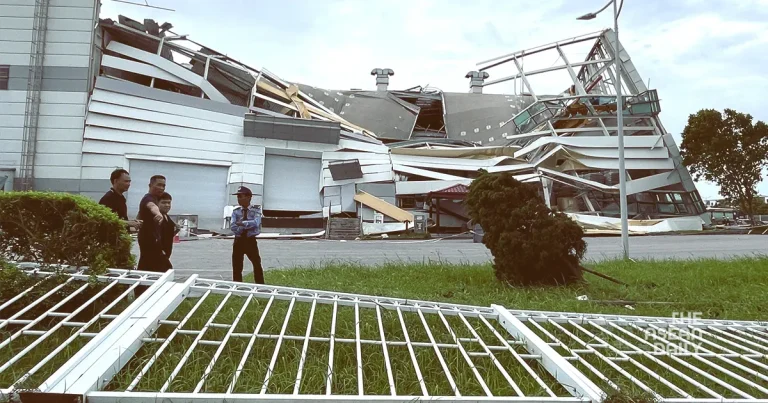11-9-2024 (HANOI) Typhoon Yagi has caused extensive damage across northern Vietnam, hitting the region’s vital industrial areas. Factories were severely impacted, warehouses flooded, and many plants were forced to shut down, leaving some companies bracing for weeks of recovery before resuming full operations. Executives have expressed concerns over the ongoing disruptions and their potential impact on global supply chains.
The typhoon, which is the strongest to hit Asia this year, made landfall on Vietnam’s northern coast on Saturday, September 7. Days later, it continued to unleash deadly floods and landslides, claiming dozens of lives and devastating essential infrastructure, including power grids and roads.
As the region is home to many export-oriented industries, the damage threatens to disrupt supply chains worldwide. Multinational corporations with operations in Vietnam typically export goods to major markets like the United States and Europe, raising concerns over potential delays.
In Haiphong, one of the worst-hit cities, around 95% of businesses were expected to resume limited activities by Tuesday, according to a statement from the body overseeing Haiphong’s industrial zones. However, the physical damage to these facilities was severe.

“Many factories had their roofs ripped off, walls collapsed, and even security gates and fences destroyed. Water flooded into numerous plants,” a report on the industrial zone’s website detailed.
The DEEP C industrial zones, which host factories in both Haiphong and nearby Quang Ninh province, were particularly affected. Bruno Jaspaert, head of DEEP C industrial zones, stated that 20 out of 150 investor plants would be offline for weeks. He noted that power consumption at these factories would likely remain one-third below normal as companies focus on rebuilding their operations.
One of the hardest-hit companies was Jupiter Logistics, part of a group co-owned by Japan Airlines. The logistics firm had extensive damage, although they were not available for immediate comment. Additionally, goods ready for export were reported to have been damaged by flooding in warehouses, heightening concerns over delayed deliveries.
In another industrial park in Haiphong, South Korea’s LG Electronics was able to partially resume operations by Tuesday. However, the factory had sustained significant damage, with collapsed walls and a flooded warehouse filled with refrigerators and washing machines.
“Many of these products were simply blown away by the storm,” said Calvin Nguyen, head of WeDo Forwarding Co, a local logistics firm. His company’s three warehouses in Haiphong had their roofs torn off and were still flooded on Wednesday, delaying shipments destined for the U.S. and European markets.
Power Outages Complicate Recovery
Meanwhile, power outages continued to affect several northern regions. Vietnam’s state-owned power company, EVN, has been working to restore the many damaged electricity lines. In Quang Ninh, several factories remained without electricity or water services, further hindering recovery efforts.
Jinko Solar, a Chinese solar panel manufacturer, faced severe damage at its Quang Ninh factory. A worker reported that operations had yet to resume, as windows were shattered, and the roof had been destroyed. Jinko Solar was also unavailable for comment.

Farther inland, industrial zones in Thai Nguyen and Bac Giang were grappling with significant flooding. These areas host major facilities for global giants like Samsung Electronics and Apple supplier Foxconn. Despite the widespread flooding, a Reuters witness reported that Samsung’s Thai Nguyen facilities had not shown visible signs of damage as of Tuesday evening.
Water levels in Thai Nguyen started to recede by Wednesday, but forecasts warned of more rain in the coming days, suggesting that recovery could still face further setbacks.




